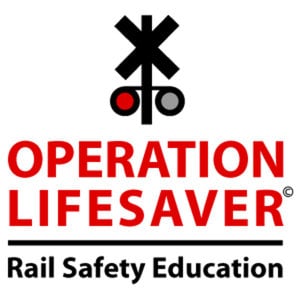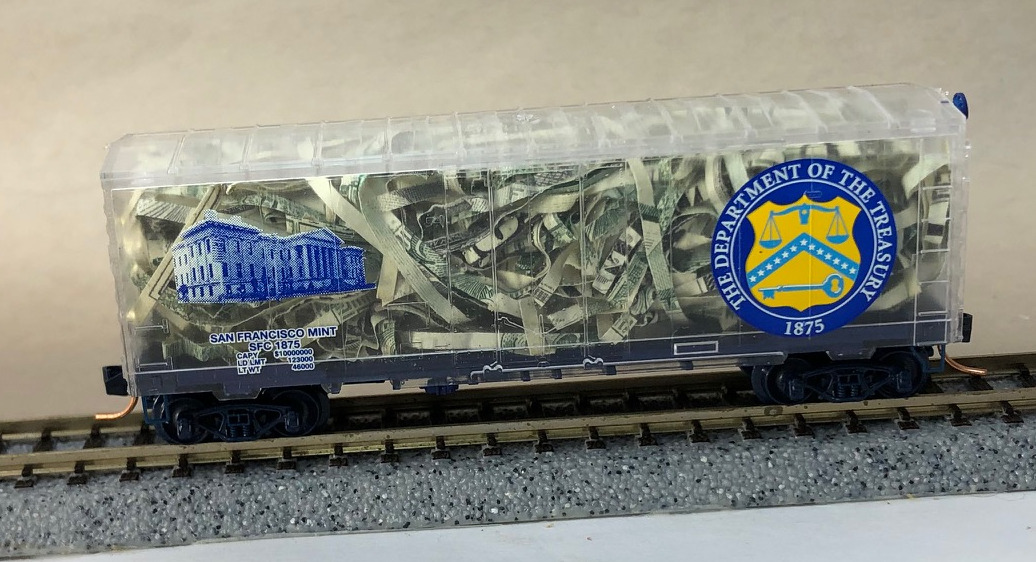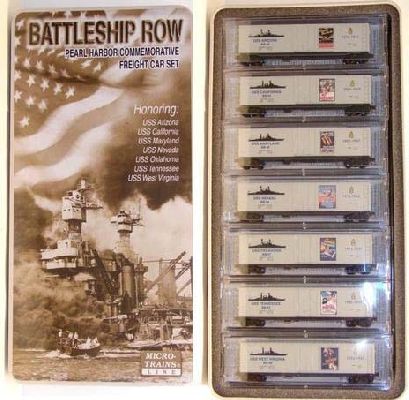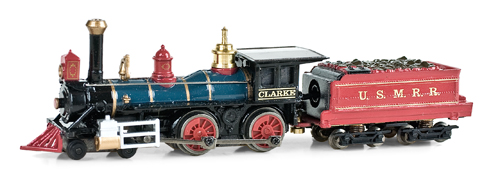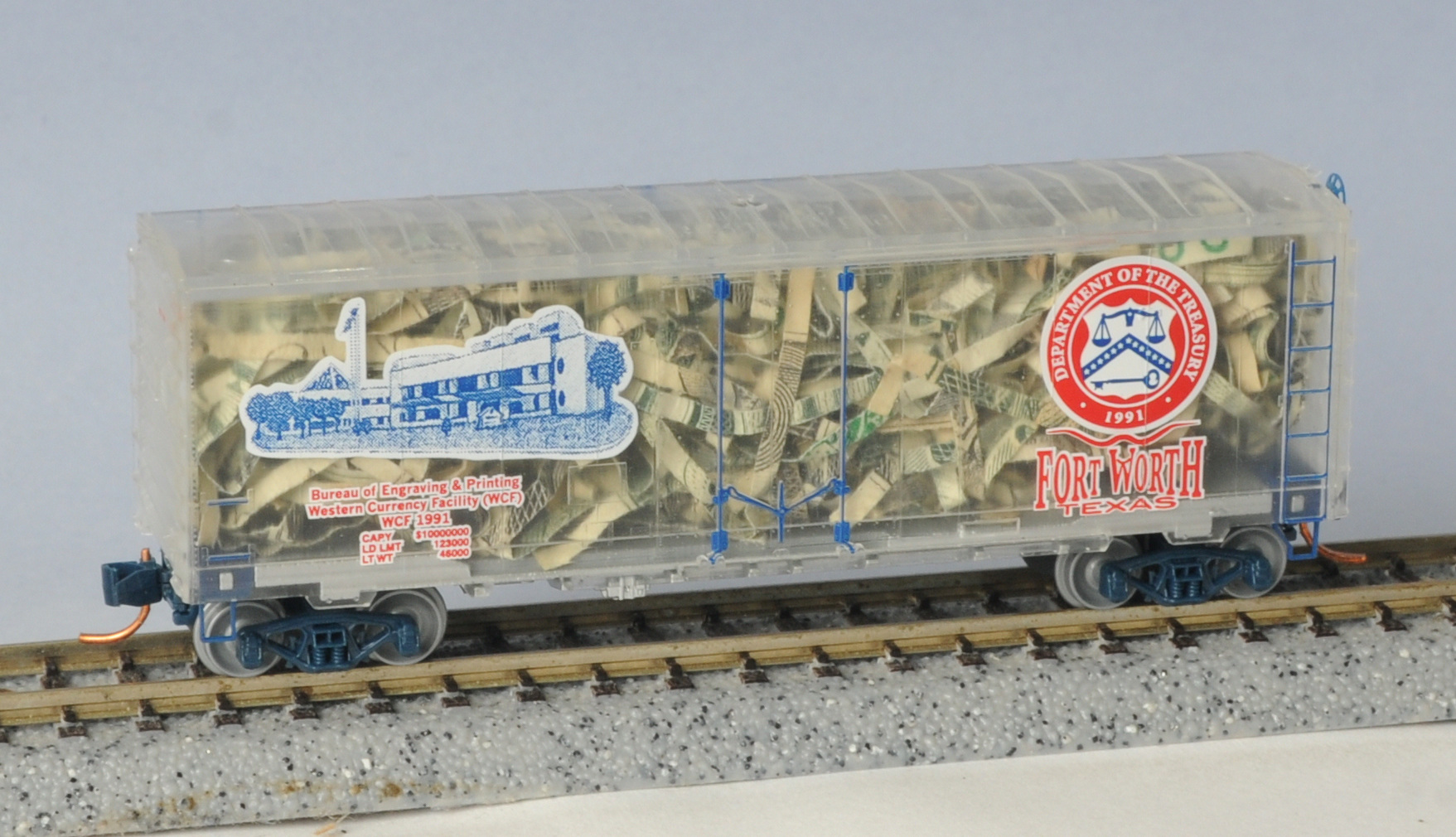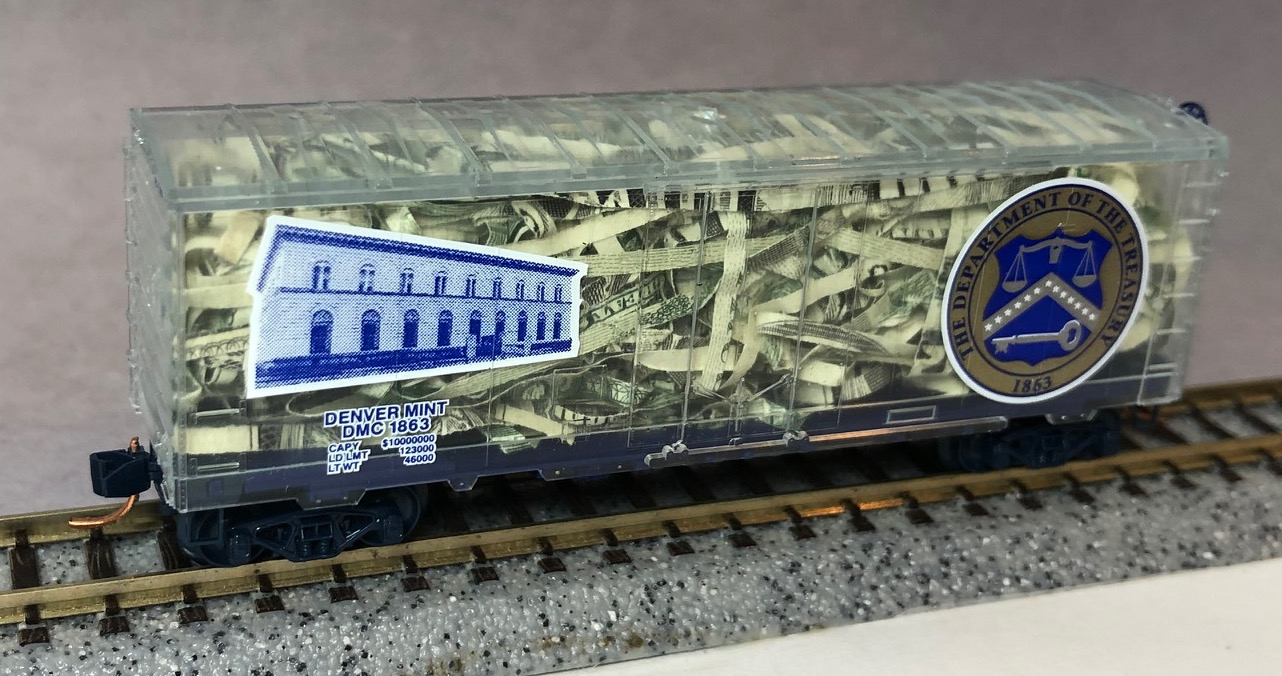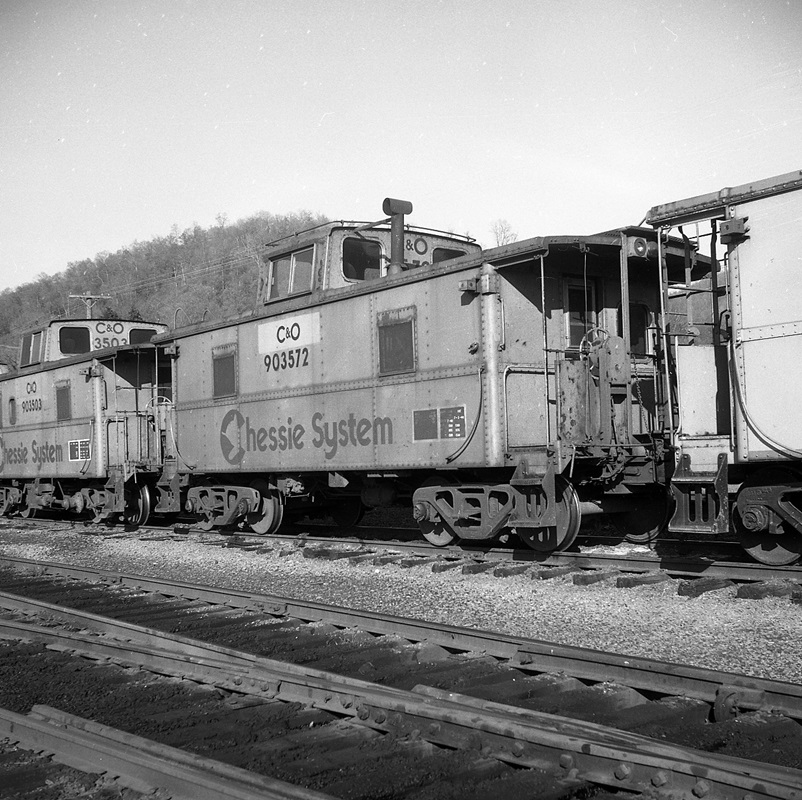Specific Item Information: This model is a collaboration between Atlas and Operation Lifesaver, Inc., in celebration of Operation Lifesaver’s 50th Anniversary in 2022. A portion of the proceeds from the sale of this caboose will be donated to Operation Lifesaver to assist their continued efforts to provide crucial rail safety education.
Model Information: Atlas introduced this model in 2008. From the get-go, this has been a Trainman model with slightly less detail and a lower price point than Atlas' Master line products. The "39" Series caboose carries a cupola almost in the exact middle of the body. It does NOT have a raised roofwalk like the NE-6. Instead the rooflwalks are molded into the roof. It does have ladders which "loop over" the roof. It carries two large windows on each side as well as two separated smaller windows on each side of the cupola. The smokestack is taller than the one on the NE-6. This model has always featured body-mounted Accumate couplers. This model falls somewhere between 2nd and 3rd generation rolling stock models. It lacks metal wheels and elegant use of detail parts (no etched metal parts here), but the wheels can be user-upgraded and one could argue that the end platform detail and ladders are sufficient to qualify for 'detail parts' - enough to make this a 3gen model.
Prototype History: The first all-steel cabooses built for the Chesapeake & Ohio Railroad were produced in 1937 by the Magor Car Corporation in Clifton, N.J. Magor, along with St. Louis Car Company and ACF, ultimately built a total of 350 cabooses for the C&O using a similar design. The last were produced in 1949. Through subsequent rebuilding and modernization, many remained in service through the end of regular caboose usage in the 1980s. Cabooses of a similar design were also built for Pere Marquette, Missouri Pacific and Chicago & Eastern Illinois.
Road Name History:
Mission
Operation Lifesaver is a nonprofit public safety education and awareness organization dedicated to reducing collisions, fatalities and injuries at highway-rail crossings and trespassing on or near railroad tracks.
Vision
To be the recognized leader in providing the public with rail safety education and ending death and injuries due to trespassing and collisions on the tracks.
History
We started in 1972 when the average number of collisions at U.S. highway-rail grade crossings had risen above 12,000 incidents annually. To address this, the Idaho governor's office, along with the Idaho Peace Officers and Union Pacific Railroad launched a six-week public awareness educational campaign called Operation Lifesaver to promote highway-rail grade crossing safety. After Idaho's crossing-related fatalities fell that year by 43%, the successful program was adopted by Nebraska (1973) and Kansas and Georgia the following year. Within a decade it had spread around the country; in 1986 a non-profit national Operation Lifesaver office was created to help support the efforts of state OL programs and raise national awareness on highway-rail grade crossing issues.
Today Operation Lifesaver's network of authorized volunteer speakers and trained instructors offer free rail safety education programs across the U.S. We speak to school groups, driver education classes, community audiences, professional drivers, law enforcement officers, and emergency responders. Our programs are co-sponsored by federal, state and local government agencies, highway safety organizations and America's railroads. Together we promote the three E's - education, enforcement and engineering - to keep people safe around the tracks and railway crossings within our communities.
Canada
Operation Lifesaver is also present in Canada. In Canadian French, it is called Opération Gareautrain that literally reads Watch your train (Gare au train).
Mission
Operation Lifesaver is a nonprofit public safety education and awareness organization dedicated to reducing collisions, fatalities and injuries at highway-rail crossings and trespassing on or near railroad tracks.
Vision
To be the recognized leader in providing the public with rail safety education and ending death and injuries due to trespassing and collisions on the tracks.
History
We started in 1972 when the average number of collisions at U.S. highway-rail grade crossings had risen above 12,000 incidents annually. To address this, the Idaho governor's office, along with the Idaho Peace Officers and Union Pacific Railroad launched a six-week public awareness educational campaign called Operation Lifesaver to promote highway-rail grade crossing safety. After Idaho's crossing-related fatalities fell that year by 43%, the successful program was adopted by Nebraska (1973) and Kansas and Georgia the following year. Within a decade it had spread around the country; in 1986 a non-profit national Operation Lifesaver office was created to help support the efforts of state OL programs and raise national awareness on highway-rail grade crossing issues.
Today Operation Lifesaver's network of authorized volunteer speakers and trained instructors offer free rail safety education programs across the U.S. We speak to school groups, driver education classes, community audiences, professional drivers, law enforcement officers, and emergency responders. Our programs are co-sponsored by federal, state and local government agencies, highway safety organizations and America's railroads. Together we promote the three E's - education, enforcement and engineering - to keep people safe around the tracks and railway crossings within our communities.
Canada
Operation Lifesaver is also present in Canada. In Canadian French, it is called Opération Gareautrain that literally reads Watch your train (Gare au train).
Brand/Importer Information: In 1924 Stephan Schaffan, Sr. founded the Atlas Tool Company in Newark, New Jersey. In 1933 his son, Stephan Schaffan, Jr., came to work for his father at the age of sixteen. Steve Jr. built model airplanes as a hobby and frequented a local hobby shop. Being an enterprising young man, he would often ask the owner if there was anything he could do to earn some extra spending money. Tired of listening to his requests, the hobby-store owner threw some model railroad track parts his way and said, "Here, see if you can improve on this".
In those days, railroad modelers had to assemble and build everything from scratch. Steve Jr. created a "switch kit" which sold so well, that the entire family worked on them in the basement at night, while doing business as usual in the machine shop during the day.
Subsequently, Steve Jr. engineered the stapling of rail to fiber track, along with inventing the first practical rail joiner and pre-assembled turnouts and flexible track. All of these products, and more, helped to popularize model railroading and assisted in the creation of a mass-market hobby. The budding entrepreneur quickly outgrew the limitations of a basement and small garage operation. Realizing they could actually make a living selling track and related products, Steve and his father had the first factory built in Hillside, New Jersey at 413 Florence Avenue in 1947. On September 30, 1949, the Atlas Tool Company was officially incorporated as a New Jersey company.
In 1985, Steve was honored posthumously for his inventions by the Model Railroad Industry Association and was inducted into the Model Railroad Industry Hall of Fame in Baltimore, Maryland. In addition, Steve was nominated and entered into the National Model Railroad Association Pioneers of Model Railroading in 1995.
In the early 1990s, the Atlas Tool Company changed its name to Atlas Model Railroad Company, Inc.
In those days, railroad modelers had to assemble and build everything from scratch. Steve Jr. created a "switch kit" which sold so well, that the entire family worked on them in the basement at night, while doing business as usual in the machine shop during the day.
Subsequently, Steve Jr. engineered the stapling of rail to fiber track, along with inventing the first practical rail joiner and pre-assembled turnouts and flexible track. All of these products, and more, helped to popularize model railroading and assisted in the creation of a mass-market hobby. The budding entrepreneur quickly outgrew the limitations of a basement and small garage operation. Realizing they could actually make a living selling track and related products, Steve and his father had the first factory built in Hillside, New Jersey at 413 Florence Avenue in 1947. On September 30, 1949, the Atlas Tool Company was officially incorporated as a New Jersey company.
In 1985, Steve was honored posthumously for his inventions by the Model Railroad Industry Association and was inducted into the Model Railroad Industry Hall of Fame in Baltimore, Maryland. In addition, Steve was nominated and entered into the National Model Railroad Association Pioneers of Model Railroading in 1995.
In the early 1990s, the Atlas Tool Company changed its name to Atlas Model Railroad Company, Inc.
Item created by: CNW400 on 2022-01-21 09:39:13
If you see errors or missing data in this entry, please feel free to log in and edit it. Anyone with a Gmail account can log in instantly.
If you see errors or missing data in this entry, please feel free to log in and edit it. Anyone with a Gmail account can log in instantly.




